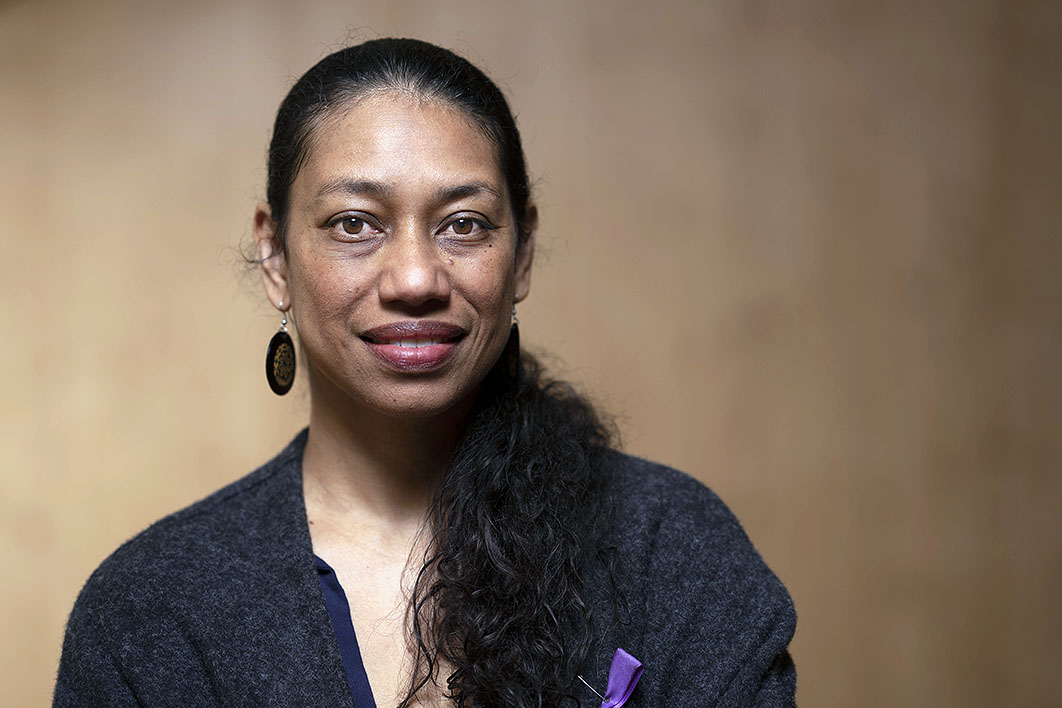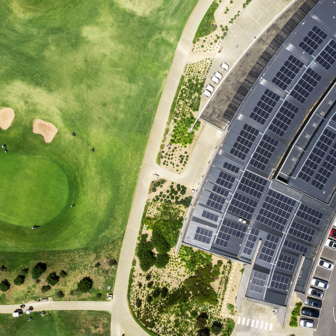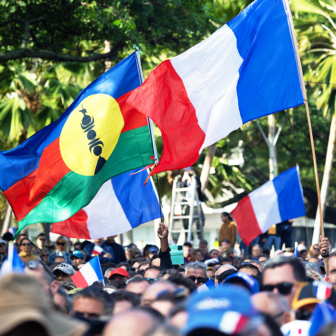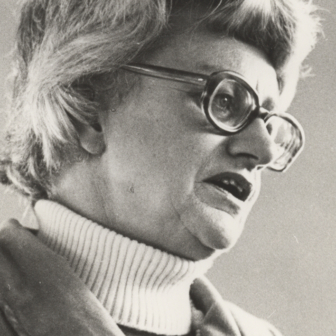Early in her book Consuming Ocean Island, an intimate, harrowing account of how phosphate mining devoured her ancestral home, Pacific scholar Katerina Teaiwa quotes an article published in the Sydney Morning Herald in 1912.
By then, twelve years after operations commenced on tiny Ocean Island — known to its people as Banaba — the venture had hit a flashpoint. Having watched the landscape being removed piece by piece, the locals “unanimously refused to sell any more land,” wrote the Herald reporter, “declaring that the lands, and the palm and pandanus trees thereon were all they had, and they asked what they should do when the big steamers had taken away all their habitable land.”
Conceding that some readers might sympathise with the owners, the reporter argued that a population of fewer than 500 could hardly be allowed to prevent the exploitation of a product so critical to Australian agriculture and “of such immense value to all the rest of mankind.”
But a solution was at hand. “A humane proposal is afoot to transplant the natives to another island in the Pacific, suitable for the purpose, in order that the valuable phosphate industry may go on unchecked, to the advantage of those industrially engaged in it, and of the people on the land in various parts of the world.”
As Teaiwa observes, “The story reduces the Banabans’ complex connection to their land to basic economics, and clearly the mining was not just for the good of ‘mankind’ but for the profits of the investors.”
The resonances these 110 years later, as the planet heats and oceans rise and Australia clings to its coal-powered economy — even in the cant about how this serves humanity’s greater good — are stark. In a recent presentation, Teaiwa recounted Banaba’s history as “not separate or different from climate change,” but as “the culmination of all the effects of all the resource extraction.” The story of Banaba and places like it, she argued, “can teach us how to observe and understand what happens to people and to the planet when you exploit such resources.”
With communications experts urging the sharing of such stories as our last best shot at salvaging a habitable planet, there’s an urgent challenge here for journalists. Especially for those of us who parachute into places that are not our own as the flashpoints of the emergency play out with increasing tempo and violence. We would like to imagine that the 1912 Herald report is a relic of history, and yet the lens is discomfortingly familiar.
How do we equip ourselves to do a better job? How might we tell these stories more truthfully, holistically, usefully? Opening this conversation with Teaiwa and a network of Pacific climate activists, there’s no shortage of practical advice.
Teaiwa begins her critique where so many outsider stories begin — with arrival. Don’t, is her exasperated counsel. Don’t wade ashore from the tinny. Don’t cross pristine, palm-fringed beaches. Don’t make heart-in-mouth landings at remote/broken-down airports. (I confess priors on both counts.) “And no paradise in crisis.” (Strike three.) “Any entry-point, arrival narrative is just going to reek of every arrival going back to the 1500s,” she says. “Step out of any one of those tropes right away.”
My reflexive defence is that these constructs help lure our imagined reader, ensconced in climate-controlled urban Australia, into raw, remote realities. The outsider narrative allows us to explain the unfamiliar, to weave in context. But yes, in all but the most careful hands, it becomes about Us not Them, sidelining people in their own place. The stories of how climate change is playing out “must centre empowered Pacific people first and foremost — not vulnerable voices, not the voices that everyone thinks are sinking,” says Teaiwa, diving into the heart of another fraught storytelling trope.
She and other Pacific scholars, activists and leaders have for years been calling out the portrayal of doomed “drowning islands,” that ubiquitous rendering of the palm-fringed Pacific emergency. This framing might not be wrong in terms of the unforgiving physics of sea-level rise, but it is distorting, simplistic and fatalistic, they argue, portraying communities as powerless and condemning them to the inevitable. Meanwhile, we with our relentless emissions, consuming ocean islands, wriggle off the hook.
These critiques don’t overlook the catastrophes looming for low-lying atolls and coastal communities. Beyond rising seas and dislocation there’s ocean acidification, depleted fisheries, crop failures, seawater inundation, cyclones, landslides, flood, drought, and vector-borne and water-borne disease. But they also demand recognition of enduring, corroding colonialism. And of the initiative, capacities and leadership of Pacific people facing down those realities. A true telling of these stories would show people as they are — “strong and resilient,” argues Teaiwa. As the Pacific Climate Warriors declare: “We are not drowning, we are fighting.”
Another person I pose these questions to is Fijian climate activist Ernest Gibson. “We have never been victims,” says the twenty-four-year-old, who is a member of the UN Youth Advisory Group on Climate Change. “When the world was ignorant about climate change, when the big five pretended our plight was a hoax, when the Pacific was being used as a dumping ground for nuclear waste, Pacific leaders and communities never backed down. So to talk about Pacific people as feeble victims is disgusting.” Journalists ought to talk instead about how the fight continues, “about the tired eyes, the aching feet and the chapped lips that, day in and day out, fight to ensure we maintain the strides we have made and sustain a culture of progress.”
But how to craft a story that recognises these actors and their actions without romanticising or soft-pedalling on the scale of the crisis confronting them? Doesn’t that risk another handball, like the Australian government’s enthusiasm for talking up community resilience — all care and no responsibility for our “Pacific family”?
Teaiwa isn’t persuaded getting the story right is so hard if reporters strive to shake up their own and their readers’ presumptions. “The Pacific has survived World War II, and then nuclear testing,” she says. Also mining, disasters, and depopulation from introduced diseases. “But people are still laughing and singing, they’re composing and they’re dancing… that’s the amazing part. The thing that white people freak out about is climate change and rising seas. And Indigenous people go, ‘colonialism was just as bad’… People want to talk about climate grief. Mate, it’s your grief — we have seen so many bad things in the Pacific for so long.”
Authentic, true stories require a diversity of voices, but outsider reporters struggle to find them, Teaiwa says. She suspects it comes down to hard-wired assumptions about culture and class. “One of the things that white scholars and white journalists get wrong is automatically assuming that powerful and empowered Pacific people don’t exist in the special places that they’re going to.” Encounters are sifted into categories — the “real people” are on the ground, in the village and vulnerable; the elites in the cities are suspect, playing to their own advantage; the political leaders are the fallback, relied on disproportionately for authority and quotes. Paste these together in a story, and it likely has all the substance of a papier-mâché balloon.
Reporters need to reach past those voices pushing themselves forward, and those who obligingly dish up the quote that supports the journalist’s preconceptions. “I would say 80 per cent of Pacific people you try to collaborate with on the ground will try to help and support you in a way they think white people want to be helped and supported,” explains Teaiwa. “So they don’t always feel free to speak their minds and to speak plainly and truthfully about something… We’ve been trained by colonialism and Christianity to do that. Also to be polite — maybe not so much behind the back.”
Of course, she adds, the other 20 per cent “may tell you to F-off right away.” My observation is that proportion is growing, especially in locations where journalists have trodden before.
“The thing to do is to open up the space for people to speak their own mind, not what they think you want to hear,” says Teaiwa. “People need to feel that there won’t be any terrible consequences for being honest.” Thinking about how this might be achieved I recall a 2019 community radio series by Brisbane-based Papua New Guinean journalist Maureen Mopio, No Land, No Livelihood, No Home, featuring interviews with women in the Pacific Islands and Torres Strait about the effects of climate change. I often recommend it to students because of the tone of her questions — curious, empathetic, respectful, patient. Not framed to elicit the presumed response, but inviting and often yielding surprising insights.
Which goes to the glaringly obvious — the home-ground advantage of Pacific journalists telling their own stories. What more authentic way of decolonising journalism than to get out of their way? Since November 2019, the Guardian Australia’s Pacific Project has provided editorial support and a global platform to collaborate on, publish and pay for some 300 stories by a network of reporters living and working across Oceania. Through fifteen months of travel restrictions, with parachute reporters largely locked out, it’s kept the region highly visible — tracking climate dynamics and political ructions ahead of the COP26 UN summit in Glasgow; the spread of Covid across Papua New Guinea and its containment elsewhere; the seismic politics playing out right now in Samoa. In between, dozens of illuminating, surprising, even joyful stories by local reporters in which the word crisis is nowhere to be found. None of this, incidentally, flows from government programs. It all relies on philanthropy from the Judith Neilson Institute.
In anticipation of the easing of pandemic restrictions and eventual return of parachute journalists, including me, to the Pacific, Ernest Gibson has a few more tips:
“Claim your ignorance”: Oceania is a region of mind-blowing complexity.
“Make connections”: Climate change doesn’t exist in isolation; it is linked to a broken system, so join the dots.
“One full story is better than a few fragmented pieces”: Practices, stories, values are all “determined by everything we see, touch, feel, hear and taste. So when you tell our story, do so completely. This may take a little bit longer, it may make the piece more complex — and even seemingly less logical, but it would be true.”
At the top of Gibson’s wish list is more regard for the reality of activists. “Our advocacy work almost never pays the bills. We’re juggling a million things at a time — making sure we have time with our families, learning about our culture (because this is a continuous journey), work commitments, trying to finish degrees, because we still live and work within a system that wasn’t built for our success. So… be patient. Find ways of meeting people where they are.”
In anticipation of the rising tide of climate stories from the Pacific ahead of Glasgow, a final directive from Katerina Teaiwa. “Drowning islands” stories won’t stop them drowning. “All the drowning stories just make people think about the hordes of migrants… This is the country of ‘stop the boats.’” The stories we need are the ones that persuade Australians “to actually reimagine their values, their lifestyle, their paradigm and their privilege.”
Go find those. •
The publication of this article was supported by a grant from the Judith Neilson Institute for Journalism and Ideas.






